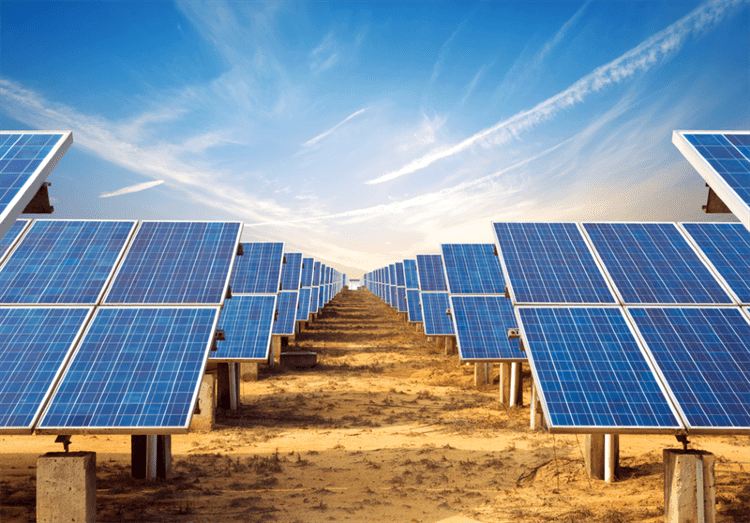
Image Credit: gyn9037/Shutterstock.com
How does energy get to your home? Flick a switch and the lights and heating come on. We rarely question how power is generated. Power plants and the companies or bodies that own them are usually only spoken about in terms of their relationship to economics and the environment. However, understanding how power is generated is a fascinating and essential thing, particularly if we are to advance and thrive as a species in harmony with the planet.
Solar Panels
Solar panels are being used globally at an individual and national scale. The panels used to capture energy from the sun are predominantly made from silicon. The panels generate a flow of electrons through the photovoltaic cells on each panel, creating electricity that is used to power homes. Any excess power produced is usually exported back to the national power grid.
The downside of solar power is that the energy created from it is almost impossible to store. As it also takes an enormous amount of heat to eliminate the oxygen attached to silicon dioxide used to create the solar cells, manufacturers have to use an electrode arc furnace to get the silicon to the temperature of at least 1500 degrees celsius. While this does work, the side effect is higher greenhouse gas emissions, which is a major disadvantage when the world is struggling to cut carbon emissions.
The other disadvantage of solar power is the over-reliance on the sun. With many parts of the world operating in a climate with uncertain weather, sunlight cannot always be guaranteed.
There is also the problem of scale. Most solar panels are large and many panels are needed to generate enough electricity for millions of homes. Geographically, there is not always enough space available.
The Role of Gas in Power Generation
Gas is predominantly found in the sea. Carbon dioxide, nitrogen, and oxygen are the most common forms found on and under the seabed, although methane is mainly used in power stations.
Gas can be shrunk down almost 600 times in volume to enable transportation to a power plant. Burned at the power station, it creates high amounts of heat energy that drives large turbines, which power generators that convert mechanical (kinetic) energy into electrical energy.
The turbines themselves consist of a compressor that draws air into the engine, before pressurizing and feeding it to the combustion chamber at high speeds.
The combustion system is made up of a ring of fuel injectors that push a stream of fuel into the combustion chamber, where it mixes with air. This mixture is burned at temperatures above 1500 degrees Celsius, which is high enough to produce a high-pressure gas stream that creates and expands through the turbine section.
The turbine itself is comprised of a complex array of stationary and rotating aerofoil-section blades. As the combusted gas expands through the turbine, it spins the blades, which drive the compressor to draw more pressurized air into the combustion section and spin a generator to produce electricity.
How Coal is Used to Power Homes
Coal power is one of the oldest mass power generation methods still used today. Unfortunately, it has a negative environmental effect, and countries are globally trying to reduce their dependence on the fossil fuel.
Coal power works by burning coal in a large boiler to produce huge amounts of steam. Once the steam is pressurized, it flows into a turbine, which then spins a generator to produce electricity. The steam is then cooled and condensed back to water before being returned to the boiler to start the process over. This method allows power providers to use less coal, but the levels being burnt are still high enough to cause harmful greenhouse gas emissions.
Nuclear and its Controversial Power Generation
Constantly debated as to its safety, nuclear power remains one of the cleanest ways to generate power for homes. Like all systems, as long as it is maintained correctly, there is a low probability of failure.
In a nuclear power plant, the neutrons used to bombard atoms to create fission are slammed against uranium, enabling the atom to split. This process releases the neutrons from the uranium, which then collide with other atoms, causing a chain reaction. This is where safety is an extremely important factor to prevent a catastrophic meltdown.
Controller rods are used to control the chain reaction by absorbing the neutrons released from the uranium. Meanwhile, in the reactor core, the fission of uranium atoms releases energy that heats water to around 271 degrees celsius. The hot water is then used to spin turbines that are again connected to the generators that produce the electricity.
Nuclear power is always a viable generation option, in part because uranium’s radioactivity allows for a plentiful supply of energy. However, safely disposing of radioactive waste remains a problem. Depleted uranium takes hundreds of years to become inert, making nuclear power potentially dangerous when used en masse.
What Other Forms of Power Generation are Used?
Other forms of power generation include hydroelectricity and wind, but both are highly dependent on climatic conditions. Hope remains that, as technology advances, renewable and greener energy sources can be relied upon to help the planet environmentally as much as possible.
References and Further Reading
Disclaimer: The views expressed here are those of the author expressed in their private capacity and do not necessarily represent the views of AZoM.com Limited T/A AZoNetwork the owner and operator of this website. This disclaimer forms part of the Terms and conditions of use of this website.